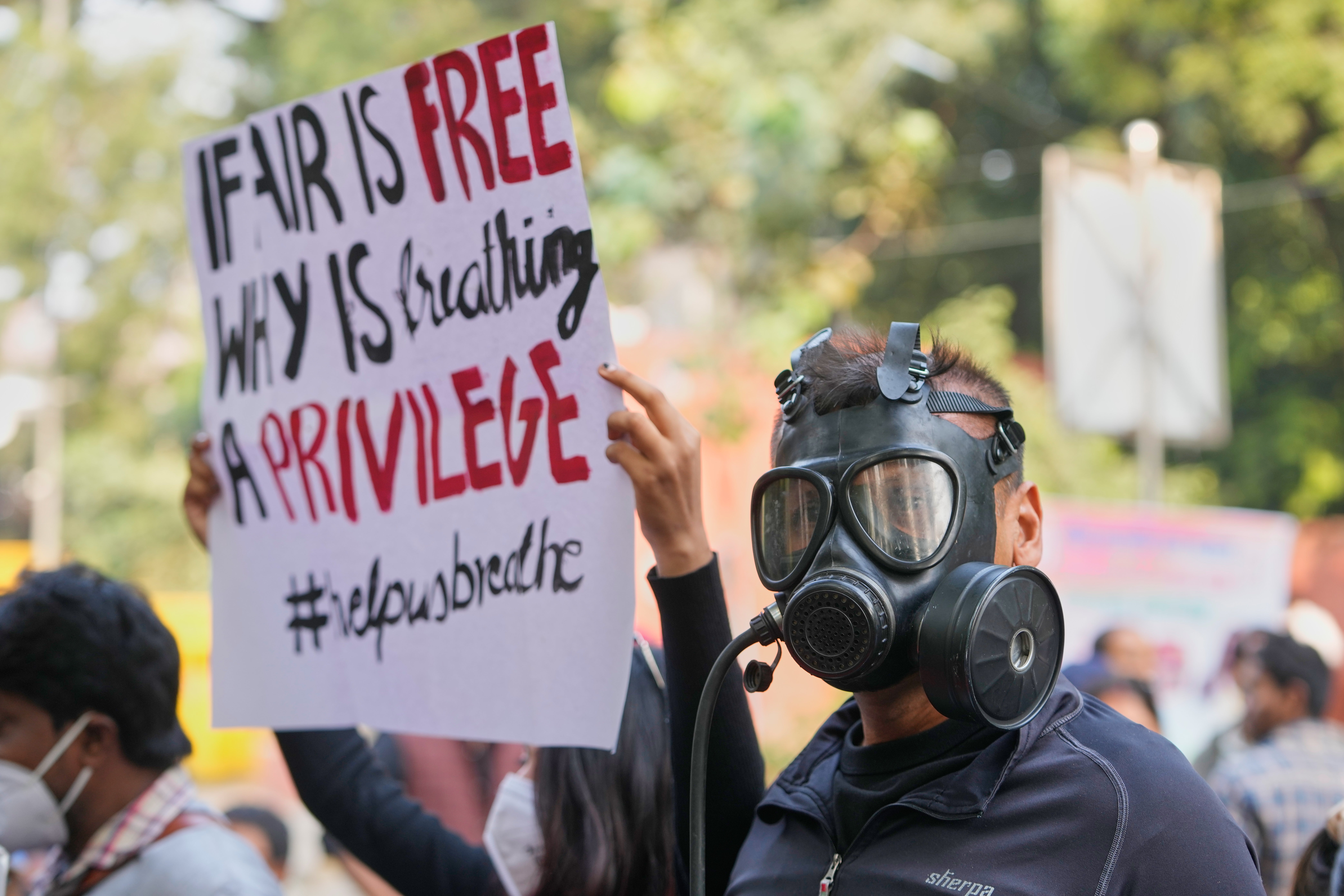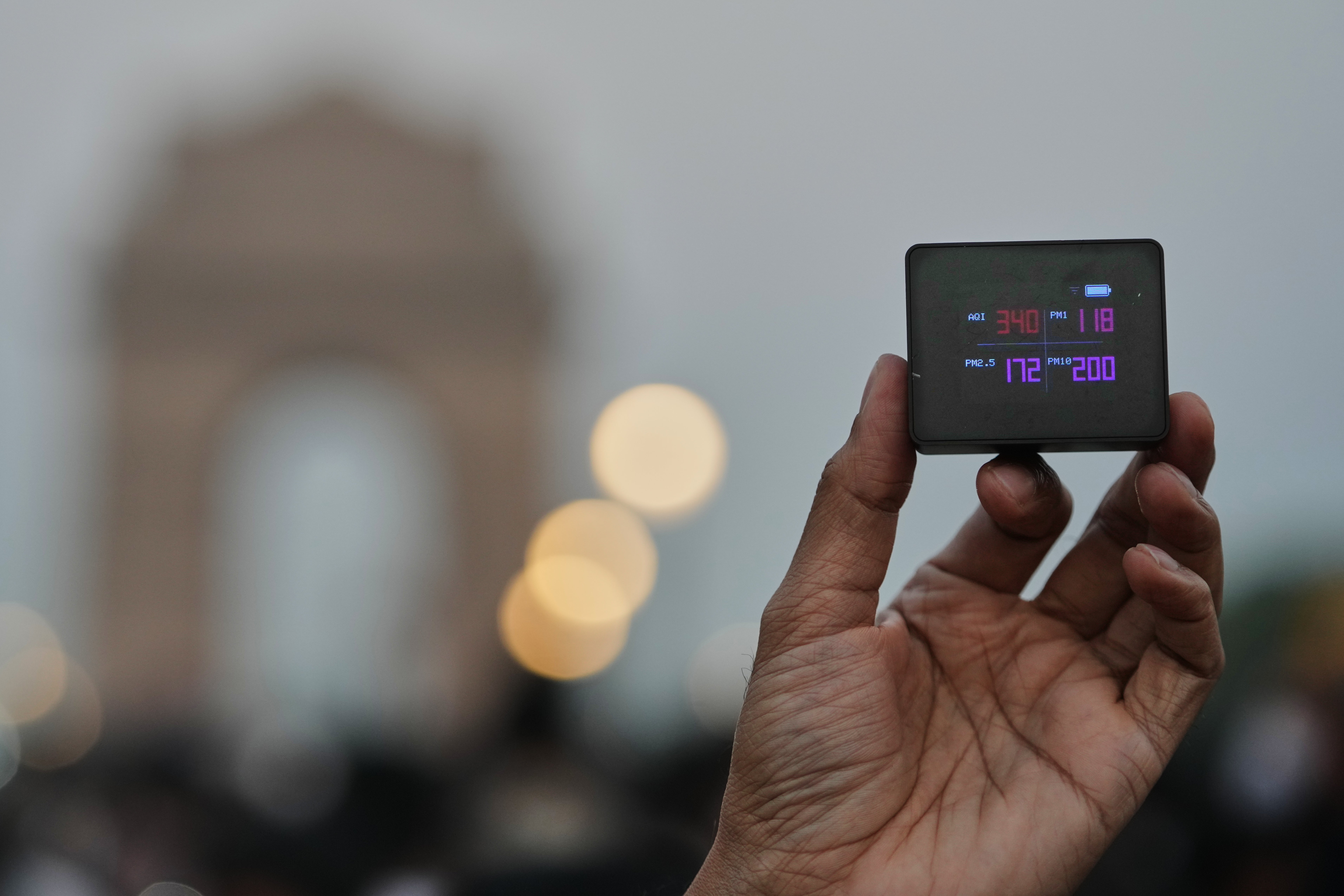Delhi’s deepening pollution crisis triggered violent clashes once again this week, with police arresting at least 23 protesters after officers were allegedly pepper-sprayed.
The demonstration on Monday began as a call for serious action on the Indian capital’s hazardous air, the latest in a series of protests this month as the city remained covered in a toxic haze for the fourth week running.
The protest quickly escalated into a confrontation after the protesters moved from the lawns at India Gate, where the demonstration was organised, to the nearby C-Hexagon road, police said.
A total of 23 people were arrested for allegedly blocking a road, obstructing police and using pepper spray against Delhi police personnel during the protest, news agency PTI reported.
One group of protesters was also accused of chanting slogans in support of a slain Maoist leader, Madvi Hidma.
Hidma, a tribal guerrilla leader, was recently killed by Indian security forces in the central Andhra Pradesh state.
A senior police officer told local media outlets that some protesters tried to cross the barricades put up to restrict movement and blocked emergency vehicles.
The clashes erupted when police were trying to clear the road for ambulances caught in the blockade, he claimed. “We tried to explain to them that many ambulances and medical personnel were stuck behind them and required emergency access, but they got very agitated.”

Police alleged that several demonstrators used chilli or pepper spray on officers when they were asked to disperse. The incident, deputy police commissioner Devesh Mahla claimed, was “unusual” and a first in recent memory.
Three to four personnel suffered eye and facial injuries and were taken to Ram Manohar Lohia Hospital, police said.
The protest involved students, parents and members of the Delhi Coordination Committee for Clean Air.
One of the organisers of the protest, Scientists for Society, said that their focus was solely on air pollution. “Our objective was to educate and organise people around the severe pollution crisis, exposing the government and this profit-centric system,” they said in a statement.
While the group “unequivocally condemns these encounters”, as gunfights between security forces and rebels are known, the protest in Delhi was “not the appropriate platform to raise this issue”.
“Ordinary students and citizens joined this protest specifically to address the issue of pollution,” it said.

Public anger over polluted air has been rising in Delhi. Last week, a group of residents stood at the historic Jantar Mantar, wearing oxygen masks and carrying gas cylinders to symbolise the city’s dystopian environment.
Before that, earlier this month, a larger protest was organised near India Gate where some participants were detained by police.
The air quality remained in the “very poor” category on Wednesday, with the citywide index standing at 337, a level deemed dangerous for everyone.
Neighbourhoods across the National Capital Region recorded persistently unhealthy conditions, adding to the pressure on the residents already coping with burning eyes, coughing and headaches for weeks.
The toxic haze, a recurring winter crisis, results from a mix of vehicular exhaust, industrial emissions, construction dust, smoke from crop residue burning in the neighbouring states, and stagnant weather patterns that trap pollutants close to the ground.
Delhi has been one of the worst polluted cities in the world for years. According to a study in The Lancet journal, exposure to air pollution has contributed to millions of deaths across India over the past decade. This winter’s smog, continuing for weeks now, has added urgency to long-standing frustrations.
While restrictions on construction, generator bans and work-from-home advisories have been reintroduced under the Graded Response Action Plan, the measures have been described as too limited and temporary to make a meaningful difference and the government has been accused of hiding the data.

